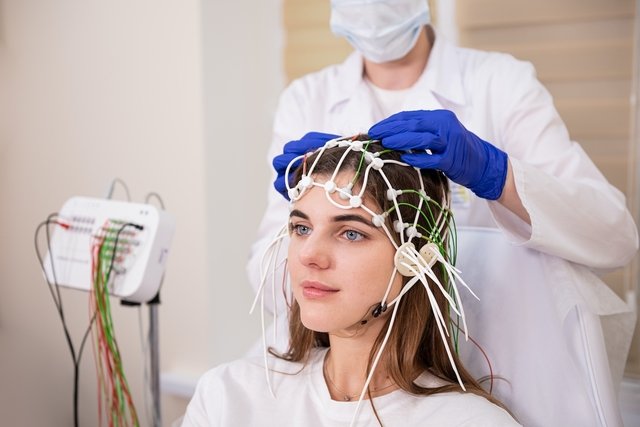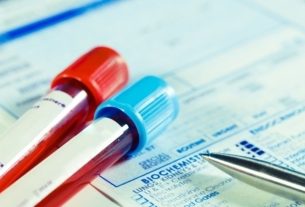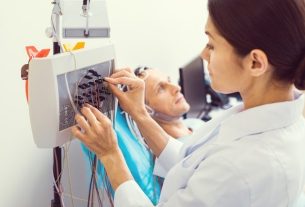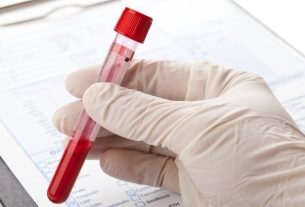The electroencephalogram, or EEG, is an exam that evaluates the spontaneous electrical activity of the brain, through the use of electrodes placed on the scalp, and is recommended by the doctor to identify neurological changes, such as in cases of epilepsy or episodes of altered consciousness, for example. example.
This exam, also called encephalography, is simple, causes no pain, and can be performed on people of any age, requiring only a few precautions before the exam, such as washing your hair with water and neutral soap and avoiding caffeine consumption beforehand. of its realization.
The electroencephalogram can be performed free of charge by the SUS, as long as it is medically indicated, but it is also carried out in private examination clinics, and the results must be analyzed by a general practitioner or neurologist.

What is it for
The electroencephalogram is an exam that serves to evaluate brain activity, and is normally indicated for:
- Epilepsy;
- Encephalopathy;
- Brain inflammation or poisoning, such as encephalitis;
- Fainting or loss of consciousness in people who have normal heart tests;
- Brain changes after stroke, intracranial or subarachnoid hemorrhage;
- Brain tumor;
- Sleep disorders;
- Dementia or psychiatric illnesses.
Furthermore, the electroencephalogram can be indicated to monitor the depth of anesthesia in surgical procedures and brain activity during brain surgery, or even to induce a therapeutic coma.
The EEG may also be recommended by the doctor as part of the tests that diagnose brain death. See all the tests that confirm brain death.
Taking care of your health has never been easier!
How to prepare for the exam
To perform the electroencephalogram, certain precautions must be taken, such as:
- Wash your hair the night before the examusing water and neutral soap, such as coconut soap, for example, and dry well;
- Avoid using oilsleave-in creams, gels, hairsprays or sprays on the hair or scalp on the day of the exam;
- Do not consume caffeinated drinkssuch as coffee, tea or chocolate, 12 hours before the exam;
- Take your usual medicines normallyunless you have been instructed by your doctor to avoid use before the exam;
- Bring a list of medicines that are used;
- Do not use earringswatch or any other jewelry on the day of the exam, as it may interfere with the results.
Additionally, if the electroencephalogram is performed during sleep, the doctor may ask the person to sleep less than 4 to 5 hours the night before to facilitate deep sleep during the exam.
How is done
To perform the electroencephalogram, electrodes with a conductive gel are attached to areas of the scalp, so that brain activities are captured and recorded on the computer, allowing changes in brain electrical impulses to be detected.
During the EEG, the doctor may recommend maneuvers to activate brain activity and increase the sensitivity of the exam, such as breathing exercises, or placing a pulsating light in front of the person.
The electroencephalogram can be done in 20 minutes to a few hours, depending on the condition being diagnosed.
Main types of electroencephalogram
The electroencephalogram can be done in different ways, the main types of which are:
- Awake electroencephalogram: it is the most common type of exam, carried out with the person awake, and is very useful for identifying most brain changes;
- Electroencephalogram in sleep: it is carried out while the person is sleeping, who spends the night in the hospital, facilitating the detection of brain changes that may appear during sleep, in cases of sleep apnea, for example;
- Electroencephalogram with brain mapping: It is an improvement to the exam, in which the brain activity captured by the electrodes is transmitted to a computer, which creates a map capable of identifying the regions of the brain that are currently active.
In addition to the encephalogram, the doctor may also order other tests to identify and diagnose brain diseases, such as magnetic resonance imaging or computed tomography, which are more sensitive for detecting changes such as nodules, tumors or brain bleeding, for example. Understand better the indications and how computed tomography and magnetic resonance imaging are performed.
Possible complications during the examination
The electroencephalogram is a safe test, generally not causing complications during the procedure. However, in rare cases, convulsions may occur in epileptic people during stimulation with pulsed light.
Therefore, the EEG must be carried out by a neurologist, in specialized clinics or hospitals, which have equipment for medical emergencies and immediate care if any complications occur.
Who shouldn’t do
Anyone can perform an electroencephalogram, there are no absolute contraindications, however, it is recommended that it be avoided in people with skin lesions on the scalp or pediculosis (lice).
Bibliography
- BIASIUCCI, A.; et al. Electroencephalography. Curr Biol. 29. 3; R80-R85, 2019
- PRIMAVERA, A.; et al. Emergent EEG: Indications and diagnostic yield. Neurology. 62. 6; 1029, 2004
- RAYI, A.; MURR, N. IN: STATPEARLS (INTERNET). TREASURE ISLAND (FL): STATPEARLS PUBLISHING. Electroencephalogram. 2021. Available at: <https://www.ncbi.nlm.nih.gov/books/NBK563295/>. Accessed on Feb 28, 2022

Sign up for our newsletter and stay up to date with exclusive news
that can transform your routine!
Warning: Undefined array key "title" in /home/storelat/public_html/wp-content/plugins/link-whisper-premium/templates/frontend/related-posts.php on line 12
Warning: Undefined array key "title_tag" in /home/storelat/public_html/wp-content/plugins/link-whisper-premium/templates/frontend/related-posts.php on line 13



